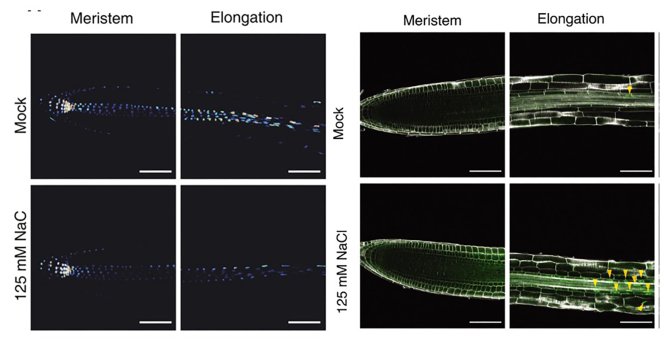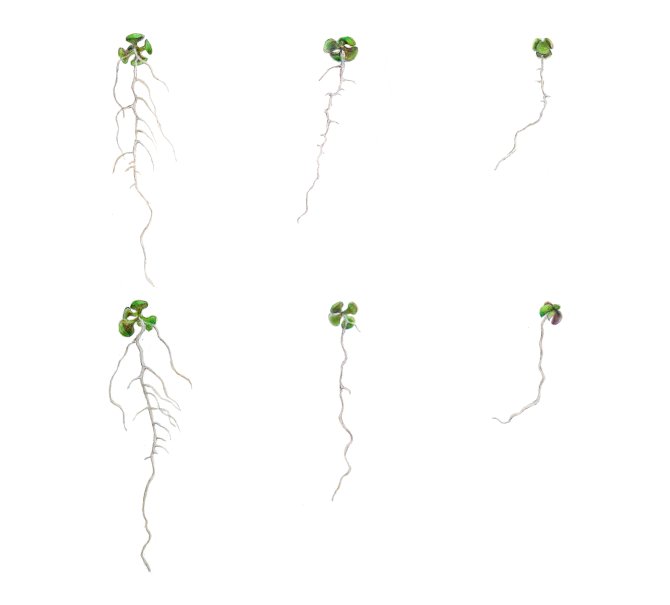
News
Increasing soil salinity: new discovery may help make crops more resilient
Salination causes harvests to fail across the globe. Plants die, or their growth is stunted. Researchers of Wageningen University & Research (WUR) have discovered that a local regulator protein encourages root growth in saline soil, which allows the plant to develop under these adverse conditions. The findings have been published in the scientific journal the Plant Cell and form a critical basis for further research into the development of more resilient crop varieties.
Almost one-quarter of all irrigated farmlands are affected by salination. Rising sea levels, increasing drought, and rising temperatures exacerbate this issue. Saline soil has a detrimental effect on the development of lateral roots, says plant physiology professor Christa Testerink. ‘Plants need lateral roots to absorb water and nutrients. The hormone that regulates the growth of lateral roots is called auxin. Salt hampers the plant’s ability to recognise the signals this hormone emits, causing the development of lateral roots to fall short. And fewer lateral roots means the plant’s general health suffers.’
Switch between hormone and lateral root growth
How is it that some plant species are less affected by salinity stress than others? To answer this question, researchers delved into the molecular mechanism that drives root development in the model plant Arabidopsis, commonly known as thale cress. Testerink: ‘Previous research already revealed that the protein LBD16 serves as a switch between the plant hormone auxin and the development of lateral roots. LBD16 activates the genes responsible for the development of lateral roots. In saline soil, you would expect auxin’s functioning to become impaired, but you would also expect the levels of the LBD16 protein to drop.’
Alternative route discovered
Surprisingly, research showed that the functioning of auxin was severely reduced in thale cress in a saline environment, while the levels of LBD16 rose. Testerink: ‘This suggests an alternative route driving the protein, which enables the plant to still produce, albeit fewer, lateral roots in saline conditions. We succeeded in finding this route by uncovering another activator, the ZAT6 protein. This protein takes over auxin’s role as regulator. This discovery provides a critical basis for further studies into similar local molecular networks in lateral roots that help plants function in stressful situations. Not just under saline conditions but also in times of drought or heat. This could help plant breeders to alter the plants’ root growth to create more resilient varieties.’

Help from machine-learning
The researchers used machine learning in their search for the LBD16 activator. Aalt-Jan van Dijk, a researcher with the Bioinformatics group, explains how this computational method contributed. ‘There are tens of thousands of possible candidates that could regulate LBD16 in a plant. You are looking for a needle in a haystack. A more targeted search is made possible by predictions. We fed a machine-learning model with data from transcription factors from experiments. The model then used patterns to predict whether a particular transcription factor regulates another or not. This narrows down the list of possible candidates. Conducting experimental tests enabled us to identify ZAT6 as the new regulator for LBD16.’

Further development in CropXR
Combining experimental data and machine learning is new within the world of plant research, says Van Dijk. This approach will be continued in the CropXR research project. ‘In CropXR, we will join forces with the universities of Utrecht, Delft and Amsterdam (UvA) in the coming decade on fundamental knowledge and methods for the development of more resilient crops. We will use, among other methods, machine learning combined with mechanistic models. These are models containing knowledge of underlying physiological and cellular processes and cause and effect. Predictions made by these models can then be tested with targeted experiments.’
Drought and rising temperatures
In CropXR, the focus is not so much on salination but on other challenges resulting from climate change, such as heat and drought, says Testerink. ‘Another paper, currently only available as pre-print, describes our study of root growth in plants subjected to a combination of warm temperatures and water deficit. We uncovered several molecular factors that play a role. But, in order to predict how plants handle this combination of stress factors, a more extensive study is required. In the first five years of the CropXR project, we will focus on Arabidopsis. During the next five years, we will apply the knowledge gained to food crops. We hope this will enable us to develop practicable solutions in collaboration with partners in the field.’